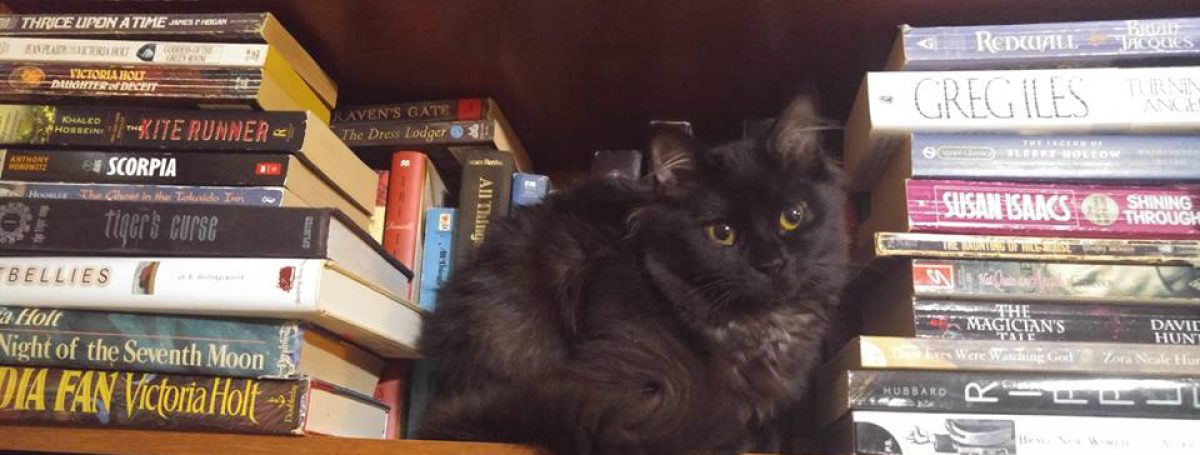 Let’s bring out another Gothic tale of horror, shall we? I have a confession to make. In my Senior year of high school, we did a “Meet the Authors” project where everyone selected an author and became them for a day. I chose Oscar Wilde, and while I spent the better part of a month trying to hone in on a reasonable Dublin accent, I neglected to read any of his actual works. I was pretty detailed about the biography, and chose to represent Wilde during his tour of the Americas, waving around a fake sunflower and preaching about aesthetics. I don’t think I pulled off dandy very well, to be honest.
Let’s bring out another Gothic tale of horror, shall we? I have a confession to make. In my Senior year of high school, we did a “Meet the Authors” project where everyone selected an author and became them for a day. I chose Oscar Wilde, and while I spent the better part of a month trying to hone in on a reasonable Dublin accent, I neglected to read any of his actual works. I was pretty detailed about the biography, and chose to represent Wilde during his tour of the Americas, waving around a fake sunflower and preaching about aesthetics. I don’t think I pulled off dandy very well, to be honest.
The Picture of Dorian Gray caused a bit of a stir after its revised edition was published in 1890. Yes, even after the editor removed some 500 words from the novel without telling Wilde, the public found their morals soiled. I can only imagine what the general public of Victorian era England would say about some of the novels coming out today. In any case, the Picture of Dorian Gray now has two main versions, the 1890 revised edition, and the 1891 full edition. I read the full editions, marked by its having 20 chapters, and yes, once again The League of Extraordinary Gentlemen lied to me. It’s no wonder Sean Connery refused to act ever again after that movie.
I will give this to Oscar Wilde, for his one and only novel, he went all out with the descriptions. There’s an entire chapter, somewhere in the middle, that’s just a list of all the beautiful things Dorian Gray buys for himself which is just sheer amounts of Wilde going on a tangent about clothes and baubles. However, any time that someone is described, Wilde is almost like Basil the painter, giving colors that at the time probably made sense, but now seem sort of dated. I think one of the most interesting descriptions is the painting itself, which I found out is actually a full body painting and not the bust painting that everyone seems to showcase in popular films. For all the flowery descriptions that Wilde uses throughout much of the novel, whenever the painting is mentioned, it’s with a much darker descriptive tone.
Well, if the descriptions are so nice, why was all of England having a moral conundrum? One thing that the editor that removed part of the novel was quoted as saying was that there were parts that civilized ladies would take exception to. I can only think he means the various parts of the novel where either Dorian or his mentor, Henry, basically state that women are idiots and actually want to serve men. I mean, it’s probably the blatant murders and non-marital relations that happen in the book, but I like to think that the rather obvious sexism and racism in the book may have raised some eyebrows. The main plot is basically one man’s descent into a life of debauchery, but kept young and beautiful because his painting takes on all of his sins. I’m certain a few people probably took offense to the thought that any ill deeds were remarked upon the wearer’s features; I can only imagine awkward tea parties and dinners where everyone was examining the crow’s feet of their neighbors. (Also, apparently the edited version had Basil be madly in love with Dorian, and being gay was sort of punishable at the time. Wilde fixed it to have Basil be madly in love with his art when the story was published in book form.)
Because the entire book is basically the character study of one man’s descent into hedonism, Dorian Gray himself gets a lot of character depth thrown at him. His moral dilemmas are much of the novel’s content. In contrast, the two other most prominent characters are set up more like foils to each other. Henry Wotton represents all the hedonism and decadence of the upper class, where as Basil Hallward represents the moral duty of mankind as well as the middle class. The rest of the characters aren’t really around for more than a chapter or two, so while they may be elegantly described, there isn’t much depth given to them. (Except maybe Sibyl, and to an extent, Sibyl’s brother). There are plenty of interesting characters along the way, but probably don’t expect a lot of interlocking morality plot lines.
Overall, I liked it. I wish I had read it during my Senior year so I would have been able to reflect Wilde’s flowery descriptions into my speech. But one cannot go back in time 10 years and force one’s younger self to read a classic.
Behind every exquisite thing that existed, there was something tragic. – Oscar Wilde
If you like the review, please like and comment. You can also follow me for more reviews as I read through the list. And if you want a copy of the book for yourself, simply click on the book’s image to go directly to it’s page on Amazon.

3 thoughts on “Book #38 – The Picture of Dorian Gray by Oscar Wilde”